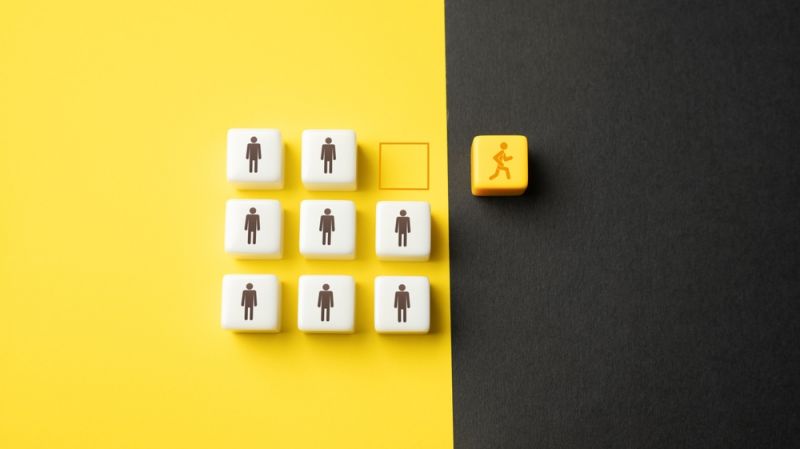Are Tattoos Still Taboo at Work?
One in three Canadian adults now have ink. It may be time to revisit the norms of workplace professionalism

Think of what a working professional looks like. What do you see? A nice suit? A button-up dress shirt? Classic pumps or Oxfords? Maybe a nice watch?
Do you see a tattoo peeking out from that shirt’s collar? Or from underneath that watch? Or on the ankle above that dress shoe?
If not, you might want to adjust your perception. Tattoos are everywhere in 2025. According to a 2024 survey conducted by the Logit Group, one-third of Canadian adults now have tattoos. Among Millennials—who are entering their peak ladder-climbing years—the number is more than 50 per cent.
Yet, even with so many inked individuals of working age, the jury is still out on whether visible tattoos are appropriate in office environments. Where do tattoos fit in the ever-evolving norms of corporate attire? Do they put people at a career disadvantage? Who is allowed to show ink, and when?
These are questions Alyssa Grocutt spends a good deal of time thinking about. Grocutt is in the final year of her PhD in management at Smith School of Business, and her dissertation (under the supervision of Smith Professor and Borden Chair of Leadership Julian Barling) probes how people perceive and behave towards tattooed colleagues in the workplace. Here, she chats with Smith Business Insight contributor Deborah Aarts about the role tattoos play in the work world of today.
Let’s start by talking about the stigma surrounding tattoos. People express themselves in all sorts of ways—through their clothing, hairstyles, jewelry and more. What makes tattoos different?
That’s a good question. I think it may have to do with the permanence of it. It’s an intense body modification, and for a lot of people, it seems like quite an extreme form of self-expression.
Sociologically, there is a long history of stereotypes about tattooed individuals. Among settler populations in North America—it’s important to note that Indigenous populations have their own culture around tattoos—the people who historically had tattoos were bikers, sailors and gang members. Many of us have come to associate tattoos with more deviant groups. And I think it’s hard to shed that.
Is the growing popularity of tattoos changing that perception?
Perhaps. But tattoos are still a violation of what we expect. Nearly 70 per cent of people don’t have them. Of those who have tattoos, most aren’t visible.
So, most of us still go into interactions with people expecting to not see tattoos. They still catch our attention.
So, is it safe to say that tattoos are not yet considered mainstream office attire?
I do think we are moving more towards a place where people with one or two small, dainty tattoos are seen as normal at work. But I feel like it’s going to take a while for the highly visible or heavily tattooed to be seen as being on par.
Anecdotally, when I tell people about my work, I often hear, ‘Oh, things have changed. Tattoos are lot more accepted now.’ But that usually comes from people who don’t have tattoos or who have tattoos that they can easily cover up. Whereas for people like me, who have very visible tattoos, our lived experience is very different. It's not always necessarily negative, but people do really notice and treat you different in terms of attention.
This brings us to your research: What did you set out to discover with your dissertation?
I wanted to research how tattooed colleagues are seen in the workplace. My goal was to understand how tattoos influence perceptions of things like competence, trustworthiness, riskiness and artistic tendencies. And I also wanted to learn how people with tattoos are treated in the workplace, in terms of discrimination and fairness.
To do that, I conducted an experimental vignette study, in which I created images of three types of workers and written descriptions of each. Participants were each assigned to view one of these workers, imagine them as a colleague, and then asked a series of questions related to how they perceived that worker as a colleague. One type featured a person with no tattoos, one with what I term a “light” or friendly tattoo, and one with a “dark” tattoo.
Hold on—what makes a tattoo “dark”?
It’s one that appears intimidating, which depends on the observer and how they perceive things. What I think looks intimidating might be very different from what you think looks intimidating. But there are certainly some that people tend to agree to be threatening in a professional context: nudity and offensive language tend to fall into that category.
Back to the dissertation. What did you learn?
I found that, in general, workers with more friendly tattoos are perceived and treated the same as workers with no tattoos, but workers with intimidating tattoos are perceived differently.
How so?
There are negatives and positives. People with intimidating tattoos were perceived as more risky and are more likely to be discriminated against for that. But these same people were seen to be more artistic, and less likely to be discriminated against. One of my favorite studies found that graphic designers with tattoos were more likely to be hired because it was a sign of competence in what they were doing with creativity.
What else influences the acceptability of tattoos at work?
It depends on the role: whether a role is customer-facing or not; there’s generally more acceptance when a worker operates behind the scenes. And it also depends on the job context, especially related to the brand’s image. Let’s use hospitality as an example: Tattoos are seen as an asset at a skate shop or a dive bar, but they’re seen more as a liability in fine dining or high-end hotels.
What does the law say? Can an organization use tattoos as a basis for employment decisions?
In Canada, there are no laws against discriminating for tattoos. Legally, employers can discriminate, unless the tattoo is cultural or religious.
If you think you have been fired, or are not getting hired, because of a tattoo you could try to fight it, but there are no specific laws to protect you. And it’s a hard thing to prove because I do think a lot of the discrimination we see around tattoos is quite unconscious. A hiring manager might not realize that they’re not choosing a candidate because of tattoos. They might just have a general sense of ‘Oh, I don’t want this person.’
In recent years, we’ve heard a lot of talk about the value of allowing employees to bring their authentic selves to work. How do tattoos fit into that?
This is something I think about a lot. I really like to think that, especially after COVID, the idea of workplace professionalism has changed. For example, there’s research that suggests when people can dress in home attire, they feel more authentic and engaged in their work. People want to be able to express themselves in the way that feels most authentic to them.
But I think tattoos illustrate that there are boundaries on what is deemed acceptable or not acceptable in terms of authenticity in the office.
For many people, especially those who are heavily tattooed—myself included—tattoos are a true means of self-expression. Their tattoos make them feel more themselves. I have an Instagram account that I use to connect with others about tattoos at work. I get messages and comments all the time from people saying, in effect, ‘My tattoos don’t measure my abilities.’ A lot of people have a real desire to show their tattoos, but they are scared to do so because they know their tattoos may make them less accepted. But covering up makes them feel they are not being their true, authentic selves, which can have negative impacts on their well-being. It can get very muddy.
What would you like to see change related to tattoos in professional environments?
I think it would be great to create more of an open culture around tattoos at work. Tattoos may seem like a niche topic, but they play an increasingly important part of in broader conversation about professionalism and appearance.





